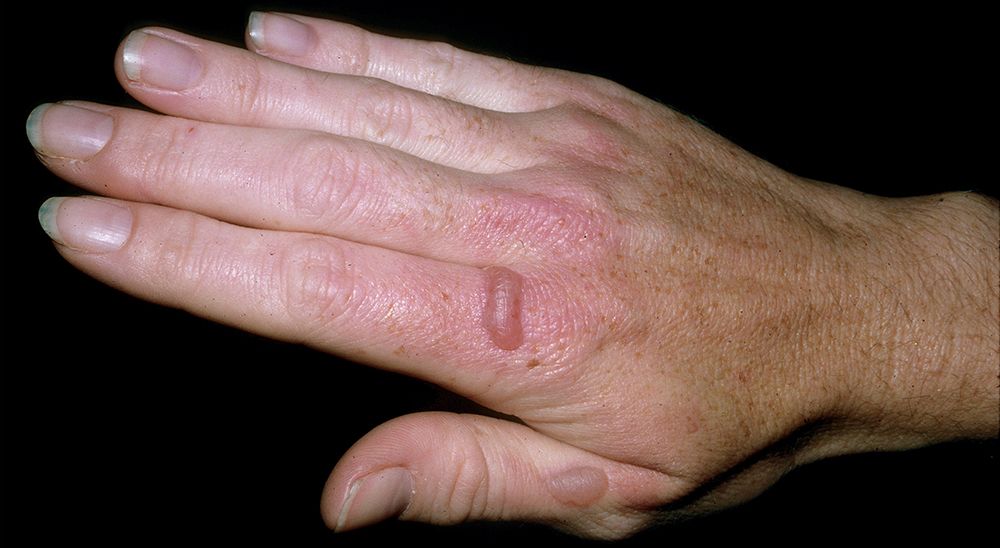A 61-Year-Old Caucasian Woman Presents With History of “Bizarre Insect Bites”
A 61-year-old Caucasian woman presented in the month of August with an approximate 16-month history of "bizarre insect bites." As an avid gardener, she spent considerable time outdoors and had never before experienced a similar problem. However, during the prior two spring-summer seasons, almost every witnessed mosquito bite resulted in either a swollen, pruritic nodule or a substantial blister. Lesions took over a week to resolve despite self-administration of 1% hydrocortisone cream. A detailed review of systems revealed increasing fatigue and mild dyspnea on exertion, both of which the patient attributed to the aging process. Past medical, family, and social histories were unremarkable. Cutaneous examination disclosed scattered intact and resolving 1- to 2-cm bullous lesions on typically exposed skin sites: dorsum of the hands, dorsal forearms, lateral neck, and legs below the knees. General physical examination disclosed pallor, but was otherwise unremarkable; specifically: there was neither obvious adenopathy nor gross hepatosplenomegaly. Considering that the patient had not received any medical attention except for a mammogram and Pap smear in the last 4 years, screening laboratories (complete blood count, biochemistry panel, urinalysis, and chest radiograph) were ordered and a skin biopsy performed.

This patient most likely has what underlying disease?